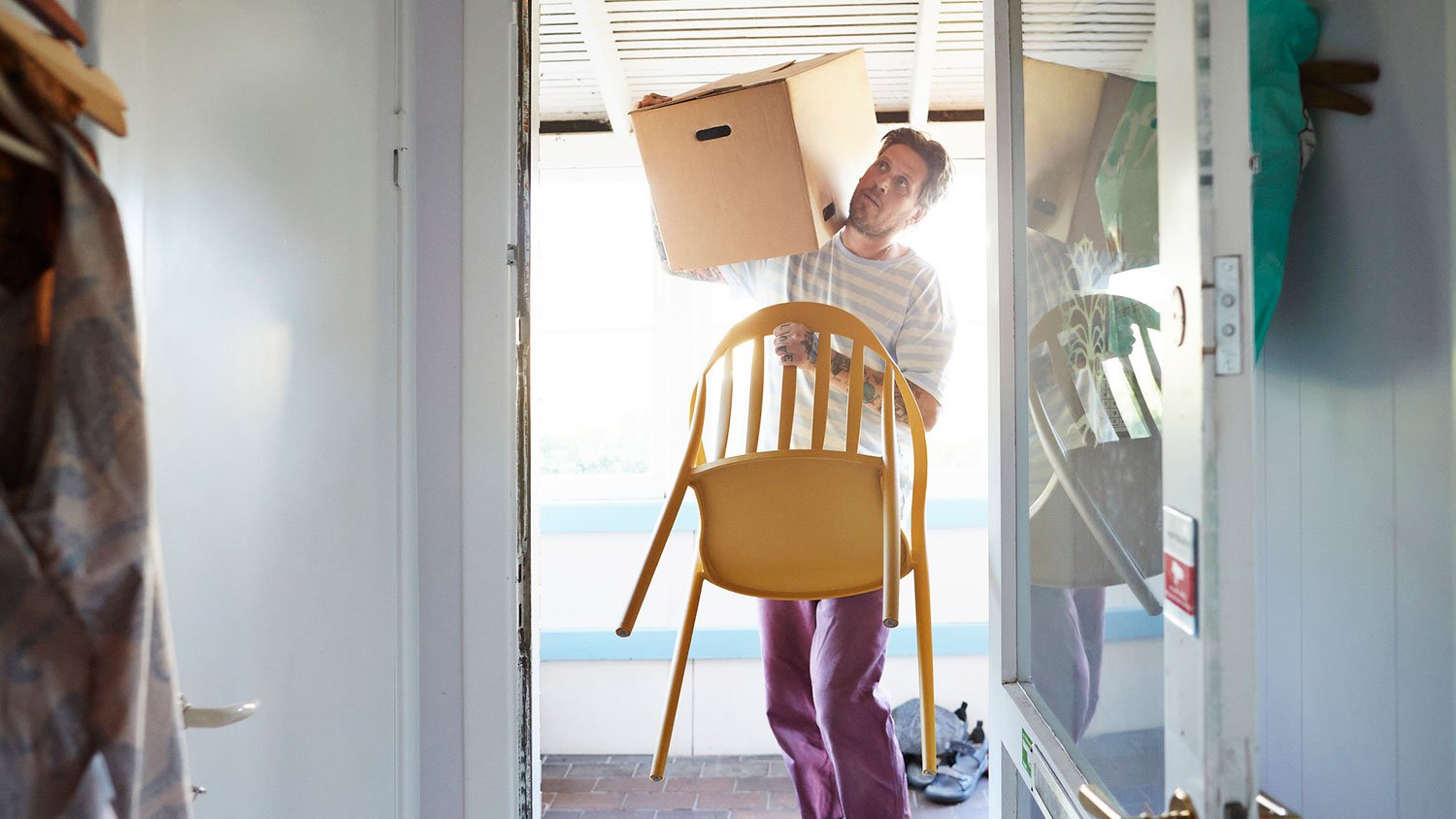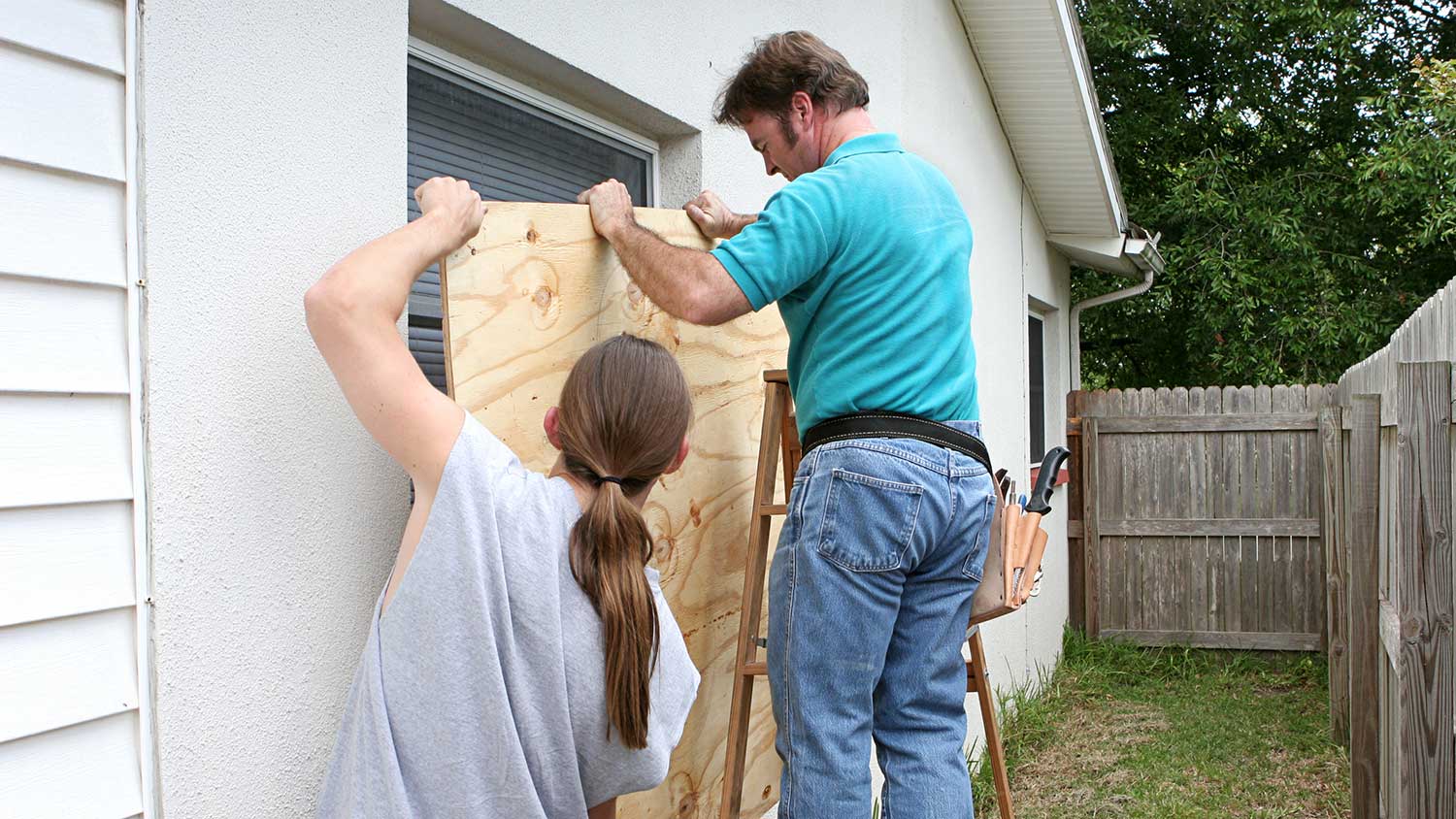9 Hurricane Prepping Tips to Stay Safe in the Storm
When the storm rolls in, remember—you’ve got this


When officials issue a hurricane warning, you don’t have time to install storm shutters or build a safety shelter. But you can get ahead of the storm with some hurricane prepping. These storm preparation tips will help keep your family safe and minimize damage to your home.
1. Pay Attention to the Weather Forecast
Forecasters can begin to predict where hurricanes may land several days in advance. If a hurricane forms, look out for watches and warnings. Here’s the difference between the two:
Hurricane Watch: You’ll hear a watch about 48 hours in advance, meaning hurricane conditions may impact your area.
Hurricane Warning: Warnings typically come about 36 hours in advance. A warning means a hurricane will more than likely hit your area, so you should start to prepare. Watch the news or listen to the radio to keep up-to-date about the storm’s progress, as well as learn about its severity. Hurricanes are ranked by categories, and you can expect the following severity with each category:
Category 1: Winds up to 95 mph, which can cause minor damage to your roof, siding, gutters, and trees.
Category 2: Winds up to 110 mph, which can snap or uproot trees and cause major damage to the exterior of your home.
Category 3: Winds up to 129 mph, which can cause devastating damage to homes and trees. Expect power and water loss for days following the storm.
Category 4 and 5: The worst of the worst, these catastrophic storms can destroy homes, with Category 4 hurricanes producing winds up to 157 mph, and Category 5 hurricanes generating winds greater than 157 mph.
2. Move Projectiles Inside

If you have time, move smaller objects such as patio furniture and grills indoors. If you can’t bring them in, do your best to secure them down as strong winds can blast these objects through your home. Try strapping your grill or furniture to your deck or fence posts or hold them down with rope and stakes.
It’s not just outdoor items that need securing ahead of a storm, however. The Environmental Protection Agency (EPA) suggests items like paint or cleaning agents are secured or stored properly to prevent the release of chemicals and hazardous substances.
3. Make Sure Your Carbon Monoxide Alarms Are Working
Carbon monoxide poisoning can be deadly, and a big storm can cause a leak. Be sure your carbon monoxide alarms are working now so you know if there’s a dangerous leak when you return home.
4. Barricade the Windows

Board your windows with plywood if you don’t have hurricane shutters. You can cover each window with a piece of plywood using screws or lag bolts; just make sure to install the bolts along each edge of the wood and penetrate the wall studs.
The best prep starts months ahead of time though. You should protect your home from wind damage and check that your HVAC is ready for hurricane season in the late spring.
5. Put Together a Disaster Preparedness Kit
If you don’t have a disaster preparedness kit, make one and keep it nearby for the duration of the hurricane and its aftermath.
Pack at least three days’ worth of food and water. You’ll need one gallon per family member per day. Regarding food, pack canned foods, crackers, cereal, and other items you don’t need to prep or cook.
Your supply kit should also include:
First-aid supplies such as rubbing alcohol, bandages, gauze, pain relievers, and prescribed medications
A battery-powered radio and extra batteries
Flashlights and batteries
Phones and solar-powered phone chargers
Cash
Food and supplies for your pets
A paper map in case you can’t use the GPS on your phone
The Centers for Disease Control and Prevention (CDC) recommends printing out as many relevant important documents as you may need ahead of time, such as emergency phone numbers and insurance information, as you may not have access to the internet for a while. It will be useful in the days and weeks following the hurricane when you have to deal with making insurance claims.
6. Create an Emergency Escape Plan
Create an evacuation plan so you and your loved ones can safely escape. In the event of a hurricane, ask yourself and your family these questions ahead of time:
When will the city evacuation start and when do we need to leave to get out of the area in time?
What is the safest route to take out of the city and what are a couple of backup plans in case a road is closed?
Where will we stay until it’s safe to return home?
How many days will we be gone and how much do we need to pack?
If we have to take multiple cars to fit all the kids and pets, or we get separated for some other reason, where will we meet back up with each other?
Make sure you have your disaster preparedness kit packed and ready to go and you have secured a place to stay for the duration of the storm. If you can’t find a place to stay, the city will have a hurricane shelter set up in a local school gymnasium or event center where people can take cover for free. You can also find an open shelter near you via the American Red Cross.
7. Communicate With Friends, Family, and Neighbors
Whether you’re able to evacuate your home or not, make sure you’ve told your loved ones and neighbors about your plans and how many people and pets are with you. This way, if no one hears from you that you’re safe after the evacuation or you become trapped in your house, someone will know to call emergency rescuers to help.
8. Turn Off the Power
If you have to leave your home, the CDC recommends turning off the power before leaving, especially if you foresee downed power lines or flooding.
9. Evacuate or Take Cover
Evacuate if authorities order you to leave, or if you live in a mobile home or high-rise building. Also, you should evacuate if you live on the coast, near a river, or in a flood plain.
Follow these tips if you face a hurricane evacuation:
Keep a full tank of gas in your car; gas stations might be closed during the disaster or you could spend several hours sitting in slow traffic as others evacuate. Ready.gov has some more good tips on getting your car ready ahead of a storm.
Plan your evacuation route and where you’ll stay, and make sure to consider alternate routes and different destination options. The roads and streets you’re familiar with may become blocked.
If authorities issue an evacuation, follow their recommended evacuation routes.
If you can’t evacuate, close all interior doors and blinds. Ideally, it’s best to take cover in a storm shelter, but if your home doesn’t have one, take cover in the lowest level of your home in an interior room, closet, or hallway free of windows and exterior doors. Lie on the floor beneath a table. If you live in a low-lying area at risk of flooding, move to a higher level of your home.





- Power Washing
- Greenhouse Companies
- Wood & Pellet Stove Repair
- Vinyl Siding Repair Contractors
- TV Antenna Services
- Ceiling Repair Companies
- Wall Repair Services
- Emergency Handymen
- Countertop Repair
- Vinyl Siding Cleaning
- Furniture Assembly
- Trampoline Assembly
- Carport Repair
- TV Mounting
- Chain Link Fence Repair
- Picture Hangers
- Electrical Handymen
- Handymen Plumbers
- Mailbox Installation
- Treehouse Builders
- Door Refinishing
- Aquarium Services
- Grab Bar Installation
- Caulking Services
- Grill Assembly
- How to Prepare for a Hurricane: 12 Essential Steps
- Hurricane Prep Checklist: Everything You Need to Stay Safe
- 4 Tips on How to Protect Windows During Hurricanes If You Live in a Storm-Prone Area
- How to Hurricane-Proof Your Home: 11 Tips for Staying Safe During Storms
- 10 Tips for Rebuilding After a Hurricane
- 7 Home Preparation Tips for Weather Emergencies
- 45-Point Moving Cross-Country Checklist
- How to Build a House: Your Complete Guide to the Home-Building Process
- Protect Your Home From Wind Damage in 5 Easy Steps
- What Damage Can a Hurricane Cause? What to Know and How to Recover















